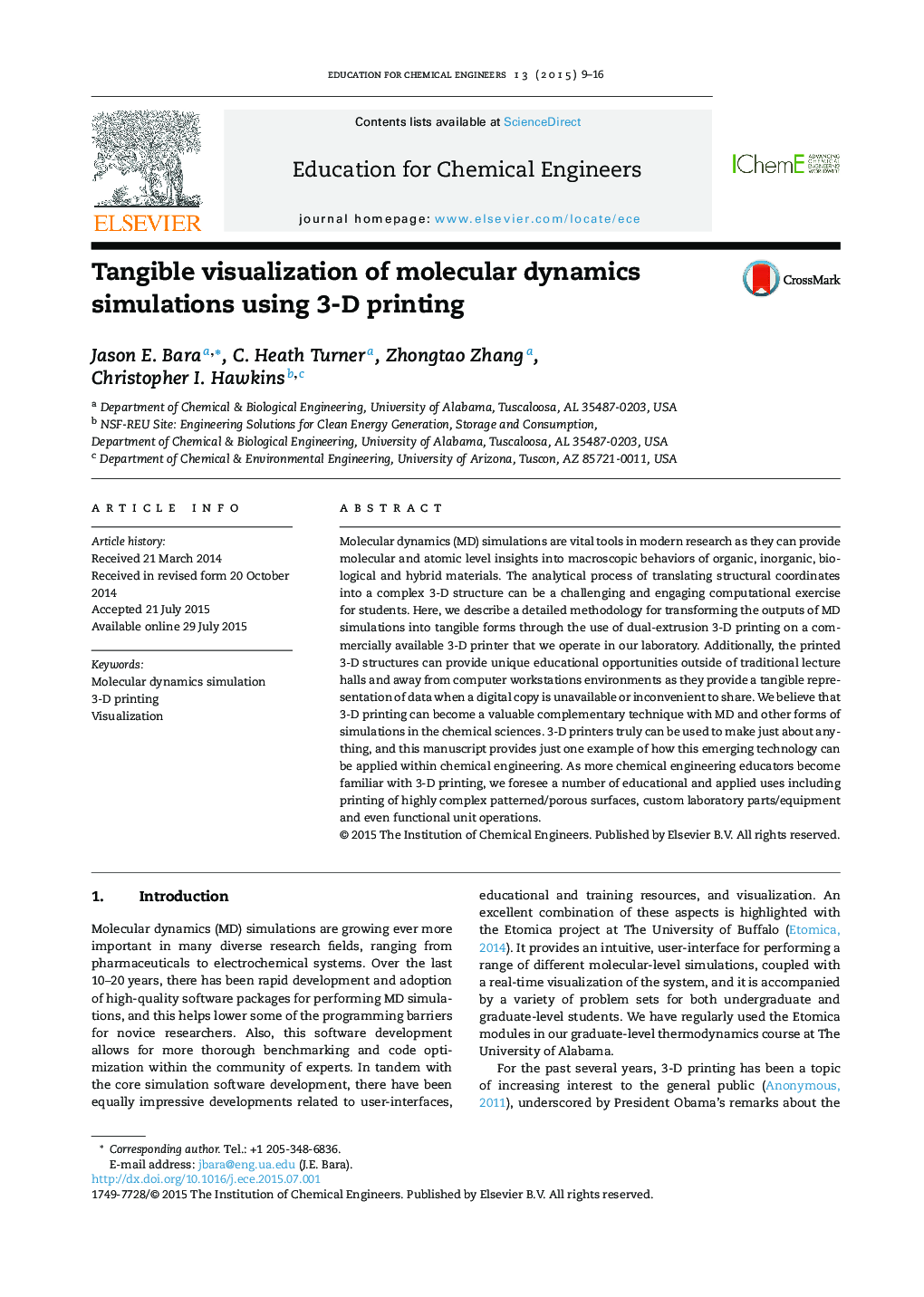| Article ID | Journal | Published Year | Pages | File Type |
|---|---|---|---|---|
| 178463 | Education for Chemical Engineers | 2015 | 8 Pages |
•3-D printing provides a new tool for chemical engineers to translate virtual data to physical objects.•Successfully translated output of molecular dynamics simulation to .stl file.•Utilized dual-extrusion 3-D printing to generate tangible models of MD simulation.•Developed detailed methodology for others to follow to facilitate others’ efforts.
Molecular dynamics (MD) simulations are vital tools in modern research as they can provide molecular and atomic level insights into macroscopic behaviors of organic, inorganic, biological and hybrid materials. The analytical process of translating structural coordinates into a complex 3-D structure can be a challenging and engaging computational exercise for students. Here, we describe a detailed methodology for transforming the outputs of MD simulations into tangible forms through the use of dual-extrusion 3-D printing on a commercially available 3-D printer that we operate in our laboratory. Additionally, the printed 3-D structures can provide unique educational opportunities outside of traditional lecture halls and away from computer workstations environments as they provide a tangible representation of data when a digital copy is unavailable or inconvenient to share. We believe that 3-D printing can become a valuable complementary technique with MD and other forms of simulations in the chemical sciences. 3-D printers truly can be used to make just about anything, and this manuscript provides just one example of how this emerging technology can be applied within chemical engineering. As more chemical engineering educators become familiar with 3-D printing, we foresee a number of educational and applied uses including printing of highly complex patterned/porous surfaces, custom laboratory parts/equipment and even functional unit operations.
Graphical abstractFigure optionsDownload full-size imageDownload high-quality image (256 K)Download as PowerPoint slide
